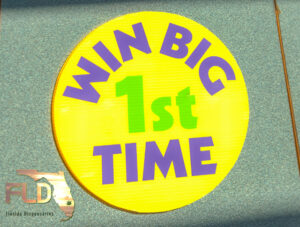

Hashish 101: Understanding What Hash Is and How It Is Used
- Plant parts called trichomes found on cannabis buds are high in cannabinoids.
- Trichomes can be separated from the buds and pressed into blocks to make hashish or hash.
- The color of hash can range from blonde to nearly black, and consistency can be hard and dry or pliable depending on the manufacturing process.
- Hash can be smoked, vaporized, and also used in cooking.
1st, What is Hashish?
The word “hashish” has its roots in the Arabic language and roughly translates to mean “grass.” Hashish use was first documented around AD 900, although some historians believe it existed long before that time. Hash was smoked for centuries for recreational use and also used in medical marijuana applications in countries such as Lebanon, Afghanistan, India, Iran, Morocco, and Pakistan.
Interestingly, French Emperor Napoleon and his army encountered hashish after their invasion of Egypt and introduced it to western culture. In the years following its introduction, the European medical community used hashish extensively for research purposes. This research ultimately led to highly innovative extraction methods and the refinement of cannabis-infused products.
Today’s hashish offers extremely high potency in the range of 30 to 60 percent cannabinoids. Depending on the strain of cannabis, hashish can be produced that is high in THC or CBD or a combination of both. CBG and delta-8 THC-infused hash is also available.
Hash also offers high levels of terpenes, the aromatic essential oils found in cannabis buds. Terpenes work synergistically with cannabinoids. The combined effects of cannabinoids and terpenes is known as the entourage effect.
Hashish comes in many different forms and textures. Hash can be oily, dry, sticky, or pasty. It generally has a light to dark brown color, although it can also come in shades of yellow, black, and red.
While hashish made from marijuana must be purchased in states with legal marijuana dispensaries, hashish made from hemp is non-intoxicating and can be purchased nationwide. Anyone can buy CBD-rich hash online and have it delivered to their doorstep.
How is hashish made?
Hashish is produced by separating and compressing trichomes found primarily in the resinous glands that line the surface of female cannabis flower tops. Trichomes contain higher cannabinoid concentrations than any other part of the cannabis plant.
Trichomes can be separated through dry sifting or through hand-rubbing. They can also be separated from the buds using ice water to make a product called bubble hash.

Dry sieve hash
One of the most common types of hashish, dry sieve has a hard, dry, consistency and is usually light to medium brown in color. Sieve hash burns easily. To make this product, cannabis buds are rubbed over a fine mesh. The powdery trichomes fall through the mesh. The finer the screen, the higher the quality.
Hand-rubbed hashish
Hand-rubbed hashish is the second most common type of hashish. It is believed to have originated in India, Afghanistan, Nepal, Pakistan, Myanmar, and Bhutan.
Hand-rubbed hash is ubiquitous around the globe and almost as popular as dry sieve hash. It has a pliable, slightly sticky texture and a sweet flavor.
To make hand-rubbed hash, buds are rubbed to separate the sticky oil. The oil is then collected and rolled into balls. The finest hand-rubbed hash then goes through a curing (drying and aging) process. Hand-rubbed hash is usually darker in color than other types of hashish.
Bubble hash
Bubble hash is made using an ice water extraction method. In this innovative method, buds are put into a bucket of ice water and the water is agitated. The trichomes freeze, then separate from the plant matter and float. The water containing the trichomes is then filtered through successively smaller screens. Again, the smaller the screen, the higher the quality of bubble hash.
How is hashish used?
Hash is remarkably versatile and can be ingested in a number of ways. Here are a few methods for enjoying any and all types of hashish.
Hash edibles
Hash can be added to any number of recipes. However, it must be heated in order to activate the cannabinoids. It can be melted into oil or butter. Hash can also be powdered and blended into beverages.
Vaping hash
Vaping devices are made especially for vaping hash. They heat the hash to a boiling point to produce a pure, inhalable vapor. The effects of vaping are felt almost immediately as the cannabinoids are absorbed directly into the lungs.
Dabbing with hash
Dabbing rigs have become very popular for vaping concentrates such as shatter, wax, crumble, and budder. However, dab rigs can also be used for dabbing hash. This produces a smoke-free cannabinoid-rich vapor. As with vaping, the effects are powerful and almost instantaneous. Because hash contains more plant matter than most concentrates it can leave behind a residue.
Smoking hash
Hash, whether it is crumbly or sticky, can be smoked in a similar fashion as dried cannabis buds. Hash can be crumbled and rolled with cannabis or tobacco or placed atop dried bud in a pipe. Harder forms of hash can be smoked directly from a pipe for a cleaner hash buzz.






